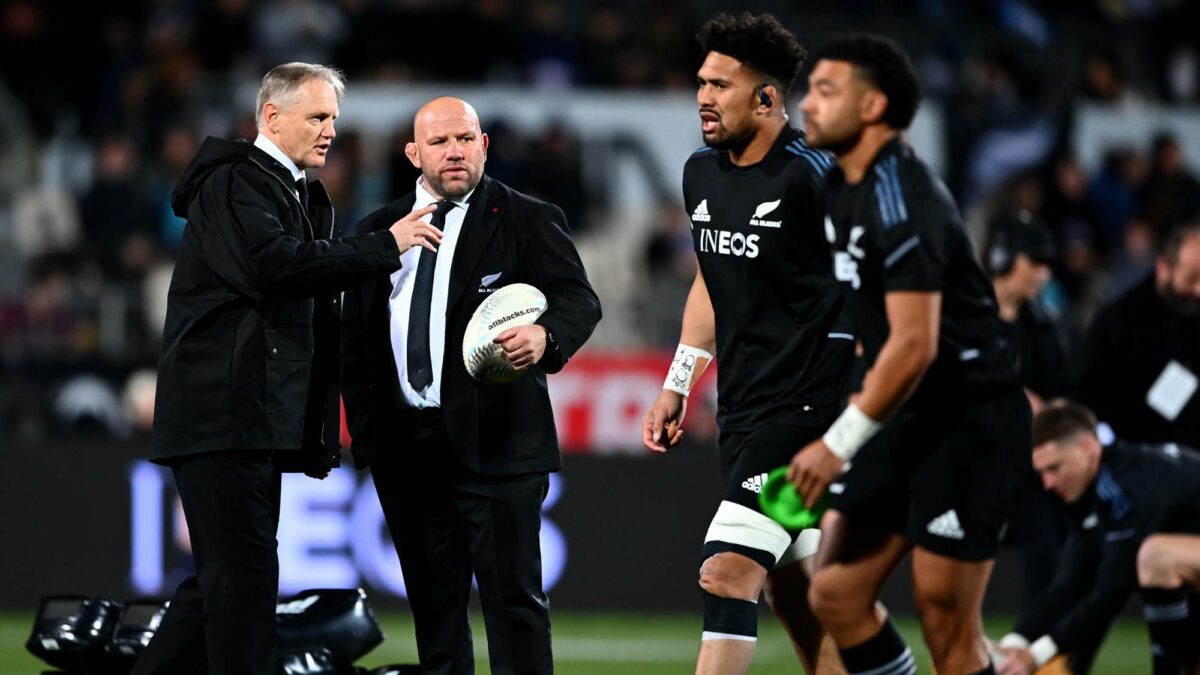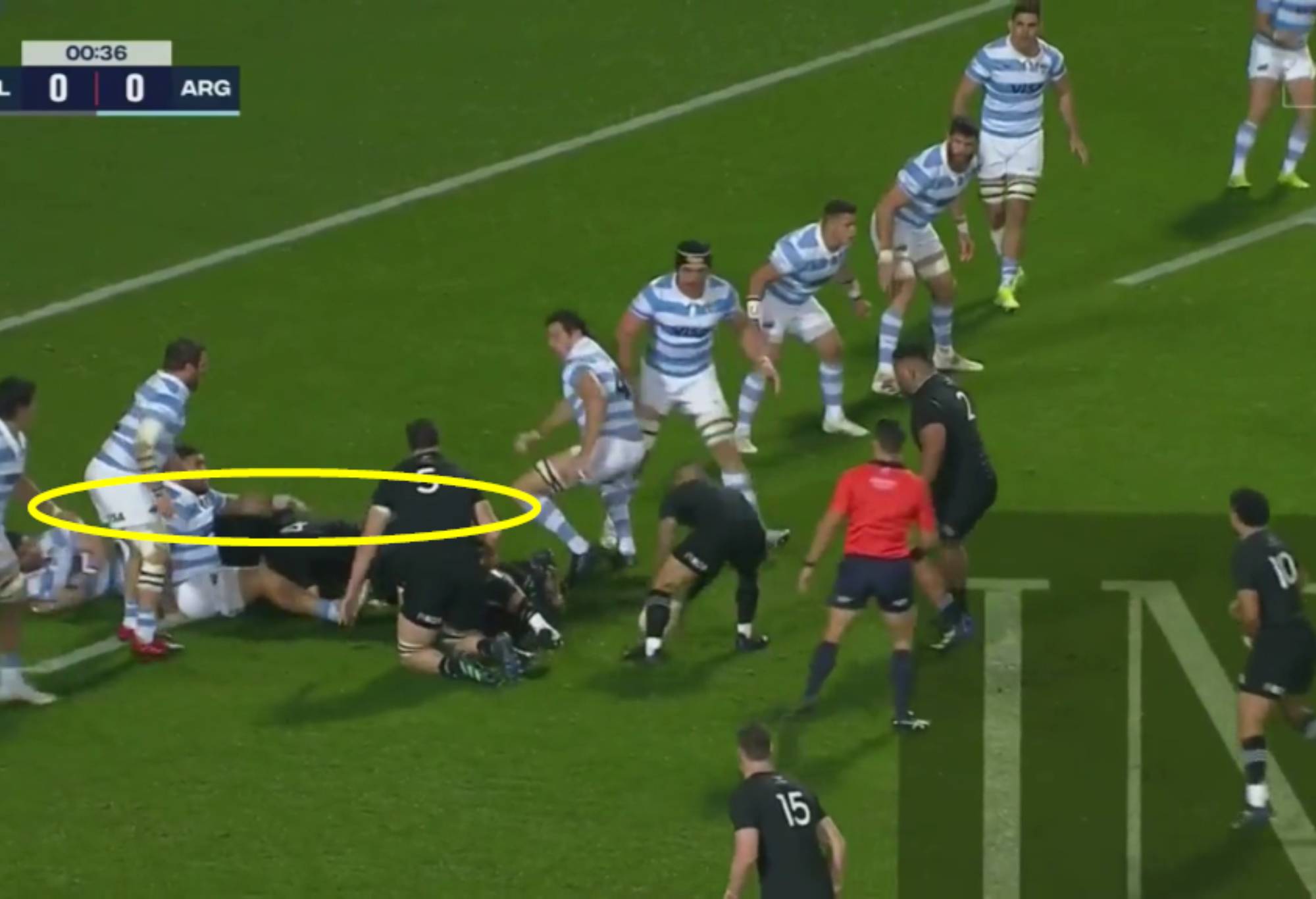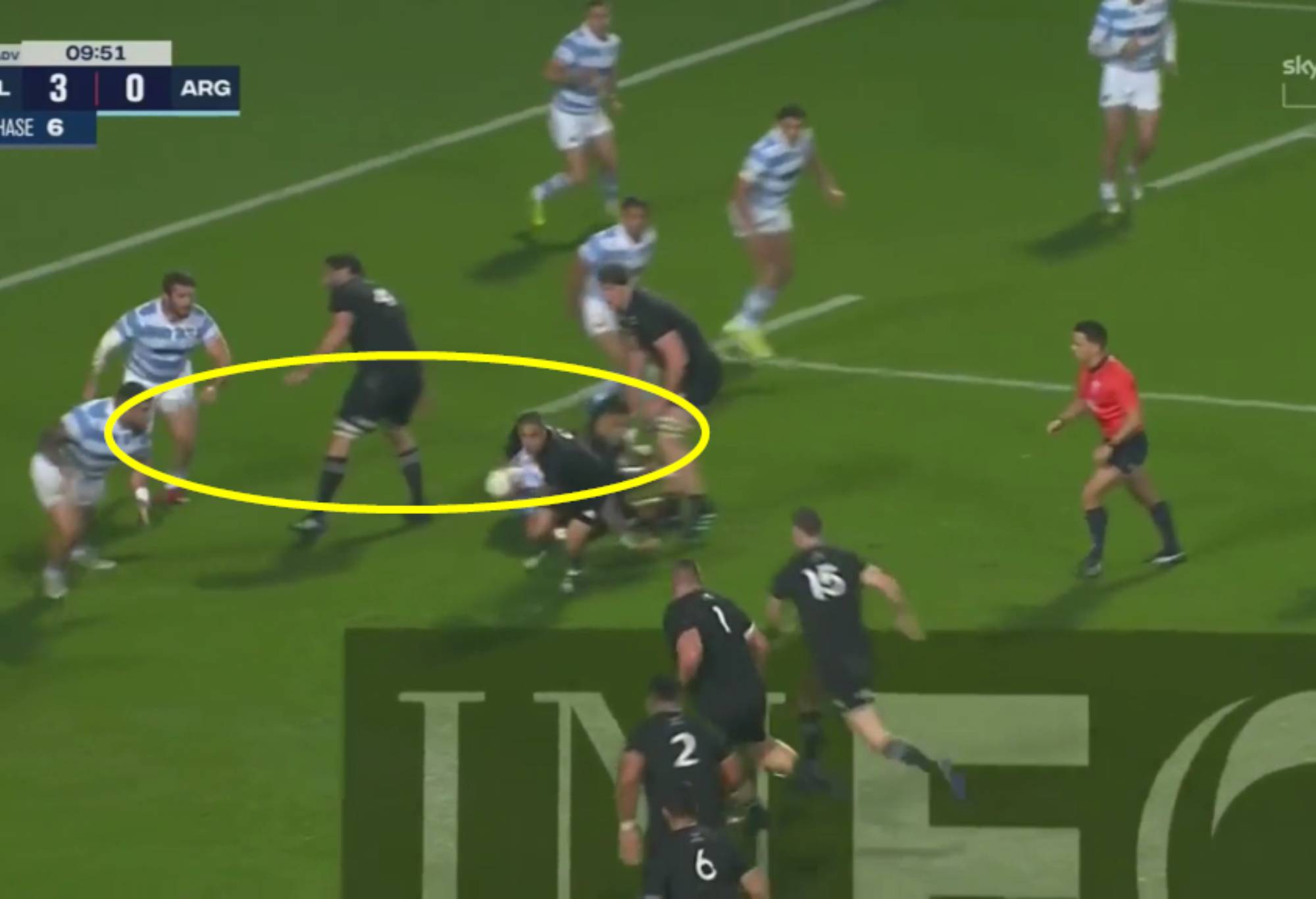
One week a rooster, the next a feather duster. One week the fluttering red cape and some effortless levitation; the next Clark Kent, disappearing back into ordinary with the specs and mild manners.
The truth is in the land in-between, where players and coaches are striving for those small incremental improvements which give rise to the big moments. Don’t judge on the moments, look for the increments. Give ‘heroes-to-zeroes’ the heave-ho, and accept that all four sides are evenly matched, and all a chance to win on any given Saturday.
Many New Zealand supporters were, quite rightly, not getting carried away by the 53-3 trouncing of Argentina at the FMG stadium in Waikato. After all, the All Blacks beat Ireland 42-19 in the first Test in July, only for the men in green to come roaring back and win the next two matches.
Don McDazzle commented: “It’s so hard to figure out where we are at. Looked toothless last week and were pathetic at the breakdowns and then put on 50 points this week.”
James in NZ added to the chorus of confusion: “Like that Wallaby win in Perth in 2019, where they put 47 points on us, then a week later we blank them. A lot of blowouts these days, only to be reversed a week later. Weird.”
Let’s try and bring a little order to the chaos by looking at what the All Blacks are doing differently. They have a new coaching ticket, with Jase Ryan and Joe Schmidt flanking Ian Foster in the coaching booth. There was an interesting moment at the end of the game, captured on social media.
Ryan turns around to shake hands but somehow manages to avoid making any contact with Schmidt. Does it mean something, or nothing? Is there some residual friction between a close ally of Scott Robertson’s in the Super Rugby Pacific season, and the coach who was guiding the Blues? Who is really in charge of the new All Blacks?
If Schmidt is involved in a coaching set-up, I believe it is inevitable the sheer intensity of his personality will dominate proceedings. Somehow, I doubt that ‘Fozzy’ will stand in his way. Where that leaves Jase Ryan (and potentially, ‘Razor’ as the New Zealand coach-in-waiting) is anyone’s guess.
Schmidt and Ryan did their job and are starting to slowly get a handle on things, but you just don’t know what you will get the following week. If Schmidt and Ryan can control and baby-sit Foster, the All Blacks will get better, but Foster worries me.
Lara
The two-match series against the Pumas has been mostly about Schmidt in terms of style and game plan, and his influence will continue to grow for as long as he is involved. These are the Schmidt signposts.
New Zealand …
- Built more than 100 rucks in both games (121 in Christchurch, 107 in the Waikato)
- Won the gain-line (65% of successful carries to 39% by Argentina), drawing seven penalties from the Pumas defensive breakdown in Hamilton
- Carried a higher proportion of ball off 9 (78% in the first game, 86% in the second)
- Scored at a (very high) average of 4.5 points per visit to the Pumas 22 in Hamilton
It is systematic, sometimes overly so, but in Hamilton it was brutal. Schmidt ran what could be called a ‘vertical attack’ with Ireland, even in good weather conditions. That will transfer to the All Blacks now. It is all about ruck-building, winning the penalty count at the ruck, and achieving penetration as close to the breakdown as possible.
Compare these two short sequences. The first comes from the classic encounter between Ireland and New Zealand back in 2013, when Schmidt was the Irish coach:
After an initial hit from lineout in midfield, play comes back to the short-side via the forwards, and when number 8 Jamie Heaslip has the opportunity to shift the ball wide, he curves his run back to the site of the ruck instead. Play then continues straight ‘up the pipe’ with a bust by Sean O’Brien and support from number 9 Conor Murray.
Schmidt’s All Blacks adopted exactly the same principles after an early turnover in the Argentine 22:
Savea could shift that ball wide, but like Heaslip he pulls it back against the grain, with a pick-and-go to follow from Samisoni Taukei’aho. Then there is another phase straight up the middle by Savea, until the ball comes back to the short-side again.
The idea is to force the offside line backwards with the sheer length of the ruck.

That is why there were “only three handling errors, in wet conditions. That’s arrested a five-and-a-half season blight of handing the ball to the opposition all too frequently,” as Lux Interior wrote.
The attacking framework will ask new questions of Rieko Ioane, a world-class attacker in space who will be required to cut back inside far more often. In defeat at Christchurch, it was a learning curve:
Ioane has the ball taken off him on a switch in the first instance, and then simply tucks and runs as a first receiver in the second example. No chance of the pass being made.
In victory at Hamilton, he showed a lot more finesse with his inside running:

This time there is a stutter-step to beat the first tackler, before setting a beautifully deep ruck for the next phase of attack, and a scoring run by Ethan de Groot. Ioane also ran his holes well:
The scrum goes forward in a straight line, and the centre picks the right hole to invade off a short pass from David Havili. The perfect ‘vertical attack’.
Rieko Ioane was able to add some of the stuff he does quite naturally as an instinctive attacker, engaging the last defender in a broken field.
It was his best attacking performance in a black shirt, now it only remains to be seen whether he can defend without the ball as well!
The New Zealand performance demonstrated how clarity of thinking in the planning can help players identify and fulfil their role within the pattern. I am sure Sam Cane is one of a number of players who would agree with that sentiment.
—
The marketing of the brand spanking new Sydney Football stadium off the field maximized expectation for the Wallabies on it last Saturday. As usual, delirium leads to disappointment, and unrealistic ‘highs’ guarantee a bigger ‘low’.
Marika Koroibete only looked like Clark Kent in comparison with his efforts in Adelaide: a superman tackle in the corner on Makazole Mapimpi, with the Wallabies winning 13 out of 15 high balls sent the way of their backfield in the course of the match.
In Sydney, the Australian wingman missed one high ball, which was turned into a five-pointer in the space of a couple of seconds of outrageous aerial athleticism by Springbok debutant Canan Moodie:
There is a time to stand back and applaud the effort by an opponent, and that time is now. Koroibete is entitled to dust himself down, shrug his shoulders and start again, with no black marks against his name. Australia – via Koroibete, Reece Hodge and Tom Wright – still won seven of the eight high balls which rained down on them in the match – and this was the only turnover. The incremental improvements were still there.
Dean’s excellent post also applied to Marika’s failure to stop Mapimpi in the right corner for a second consecutive game:
“Marika certainly wasn’t embarrassed. His positioning to catch the try [high] ball was excellent however, the try-scorer beat him to it, it happens. The only embarrassing part of the Mapimpi try, was Mapimpi’s post-try behaviour.”
The man called ‘Mapimps’ corrects the error he made in Adelaide, dropping his shoulder to get underneath Koroibete, and there is nothing the covering winger can do to stop him so close to the line.
There was a lot of criticism of the Wallaby effort up front. At the set-piece, the incremental improvements that were so urgently needed after Adelaide, were made. The Wallabies fixed the lineout, winning the turnover battle by four steals to two.
Even though tight-head prop Allan Alaalatoa was forced to remain on the park for a full 80 minutes because of Taniela Tupou’s calf injury, they won all of their eight feeds and did not attract one penalty against at the scrum.
They also ended the two-game series very much in the black against the vaunted Springbok driving maul, which is their mainspring of their red zone attack and sparked their first Test comeback against Wales in July:
South Africa scored three tries directly off their maul in that tumultuous second half, including one penalty try.
They had no such luck against Rory Arnold and Jed Holloway, with no tries in the two matches to show for their efforts:
As soon as Arnold or Holloway get hands on Malcom Marx at the back, it is ‘game over’ for the drive. Can Rory Arnold show more urgency and aggression outside set-piece? For sure. Does he provide a unique bonus within it? Yes, absolutely.
Three parts of the Wallabies forward platform – scrum, own-ball lineout and lineout defence – worked well on a rainy night in Sydney. The problem lay in the fourth part, at the breakdown. Or more accurately, in the balance between ball-carriers and cleanout supports.
With tongue firmly in cheek, The Roar regular Jeznez offered up an alternate universe of Wallaby forward ball-carriers:
“Valetini is the only member of the pack likely to bend the line. Every other member of the pack is easily contained on the carry, meaning the Boks could load up on ‘Bobby V’ in defence.
Assuming [Angus] Bell is fit again, an alternate pack with a completely different profile could be:
1. Angus Bell
2. Brandon Paenga-Amosa
3. Pone Fa’amausili
4. Lukhan Salakaia-Loto
5. Will Skelton
6. Langi Gleeson
7. Tim Anstee
8. Harry Wilson“The point I’m trying to make is there are options, fit and available that could change the carrying profile of the pack and likely muscle up better against a side as physical as South Africa.”
Jeznez
Jeznez is right: seven of those starting eight forwards can carry the ball effectively, five of them with punishing power. Four of the current starting tight forwards (Matt Philip excepted) do not fall into the same category, which left Bobby Valetini fighting a lone battle with his Wallaby-leading figures of 10 carries for a paltry 21 metres:
“With the 6-2 bench split and no Tupou to come on, they were toast the second Hunter Paisami was substituted off [in the 26th minute].” – The Ferret.
With Taniela unavailable on the bench, and Len Ikitau and Andrew Kellaway covering for Paisami in the centres, the Wallabies had no power to offer outside Valetini. They were down on carries across the gain-line (32% to South Africa’s 44%), ratio of quick ruck ball (56% to 62%) and breakdown security (5-0 in pilfers to the Boks). That is where South Africa had the winning of the match.
This was certainly the moment for Australia to return to a 5-3 bench split in selection. The Springbok think-tank had shown their hand early in the week by shifting to a 5-3 split of their own, with two loose forwards covering the back five (Duane Vermeulen and Kwagga Smith) and a true play-maker at number 10 behind them in Damian Willemse.
The Wallabies had already demonstrated they had the answer to the Bokke lineout drive without the need for six forwards on the pine. Now was the time to add another back, especially as the extra forward (Rob Leota) had only enjoyed 28 minutes of game-time over his three appearances.
At least two of Jez’s choices (Angus Bell and Pone Fa’amausili) are likely to get the nod against the All Blacks in Melbourne, and (well as Darcy Swain has played off the bench over the last fortnight) there may also be a spot for Nick Frost, one of his replacements.
From the South African point of view, Bokke supporters will be encouraged by Willemse’s display with ball in hand. He delivered a sumptuous back of the hand offload for an early break by Lood De Jager, and he was also the oil in the wheels for the best try of the tournament so far:
Willemse handled three times in the move, fanning the flames blowing in both directions, right-to-left and left-to-right; bringing the ball-handling best out of forwards like Steven Kitshoff, Siya Kolisi, Eben Etzebeth and Jasper Wiese. It was hard to imagine either Handre Pollard or Elton Jantjies having the same impact.

Leave a Reply